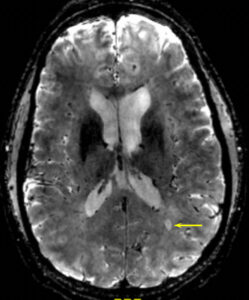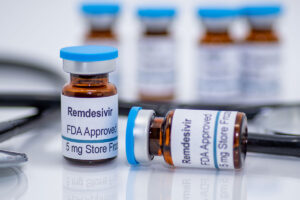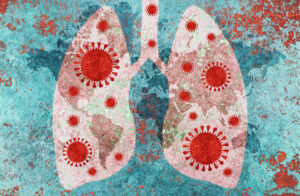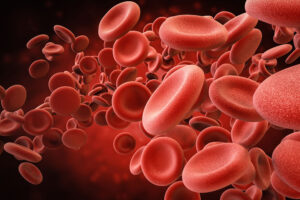Case Series: Teriflunomide Therapy in COVID Patients with MS
 From 7T MRI performed at Brigham and Women’s Hospital in Study Patient 1. This is a T2* gradient-echo sequence (0.8 mm isotropic voxels) showing a typical MS lesion (arrow) as oval, and bright, containing a central (dark) vessel.
From 7T MRI performed at Brigham and Women’s Hospital in Study Patient 1. This is a T2* gradient-echo sequence (0.8 mm isotropic voxels) showing a typical MS lesion (arrow) as oval, and bright, containing a central (dark) vessel.
During the COVID-19 pandemic, patients with multiple sclerosis (MS) and their clinicians have had questions and concerns about whether immunotherapies for MS could influence risk for infection or lead to an unfavorable outcome.



 At Brigham and Women’s Hospital, nephrologists have observed an increased risk of acute kidney injury (AKI) in COVID-19 patients. Within the intensive care units (ICUs) at the Brigham, about 15 to 20 percent of COVID-19 patients have developed AKI. In some hospitals, the incidence of AKI has been reported to be as high as 25 percent.
At Brigham and Women’s Hospital, nephrologists have observed an increased risk of acute kidney injury (AKI) in COVID-19 patients. Within the intensive care units (ICUs) at the Brigham, about 15 to 20 percent of COVID-19 patients have developed AKI. In some hospitals, the incidence of AKI has been reported to be as high as 25 percent.